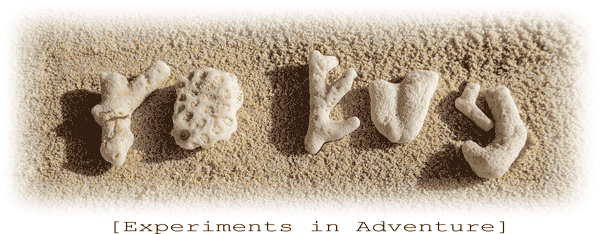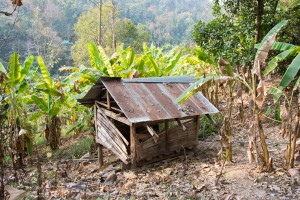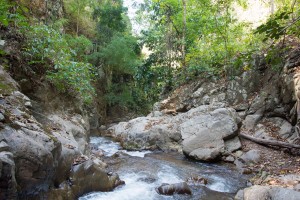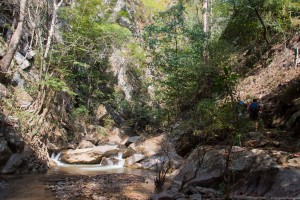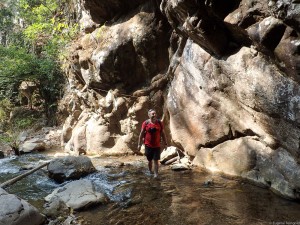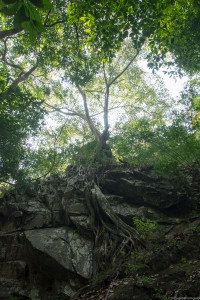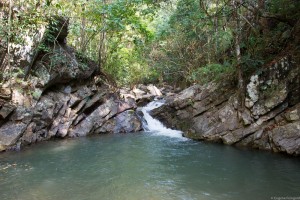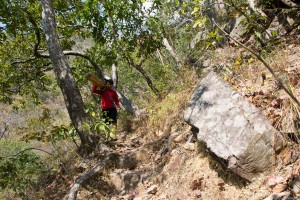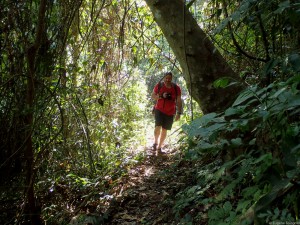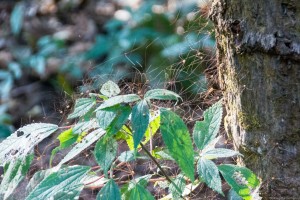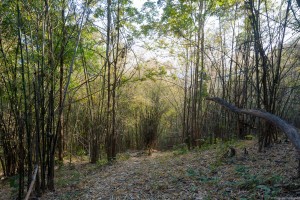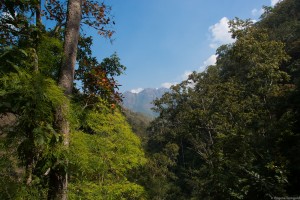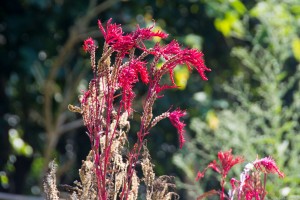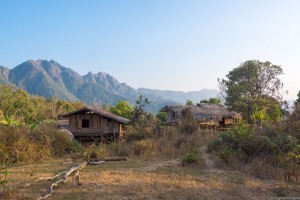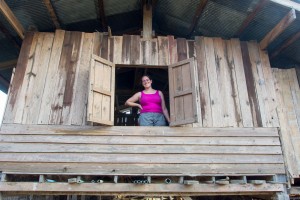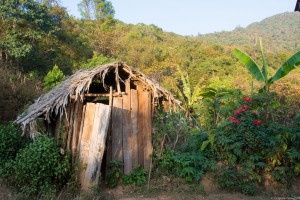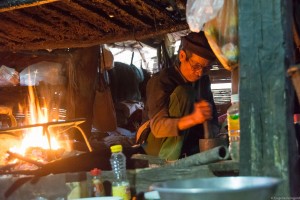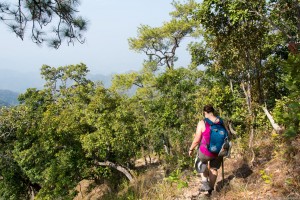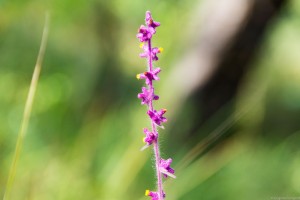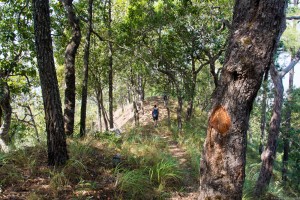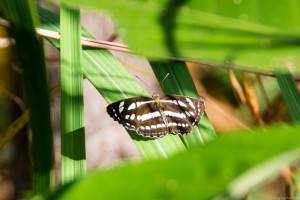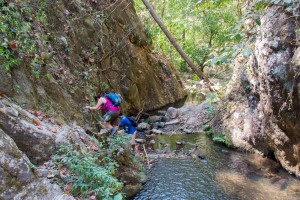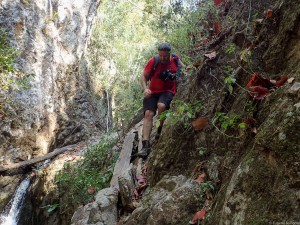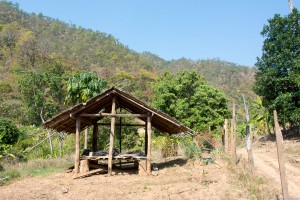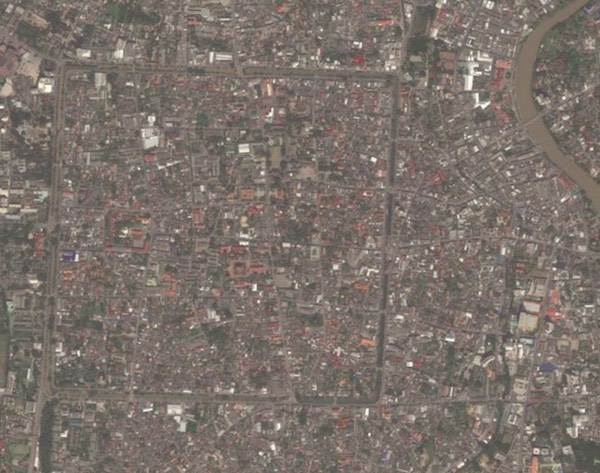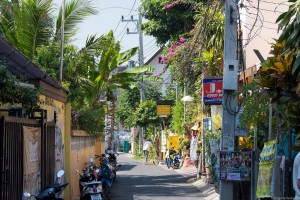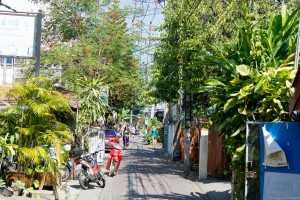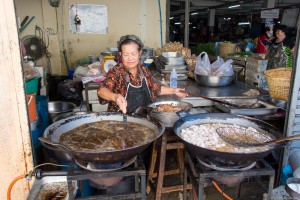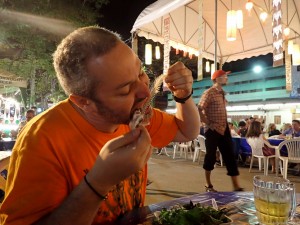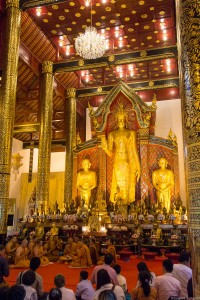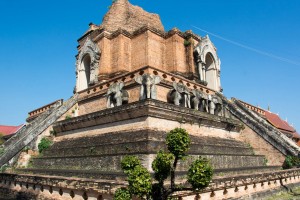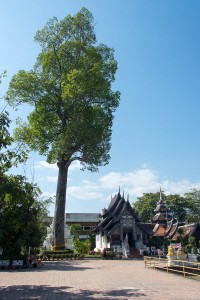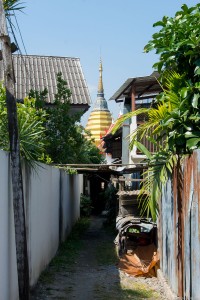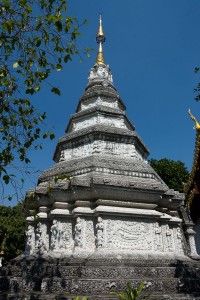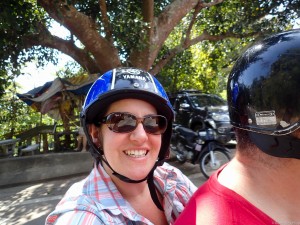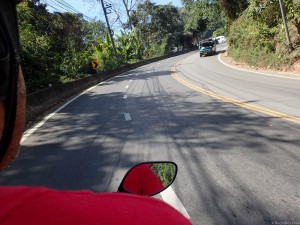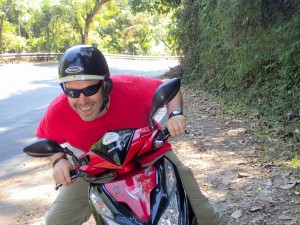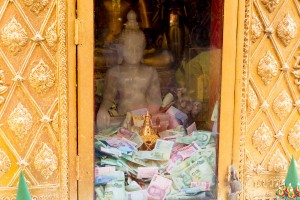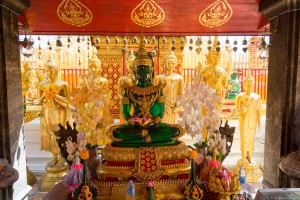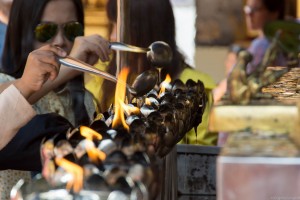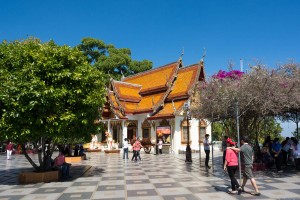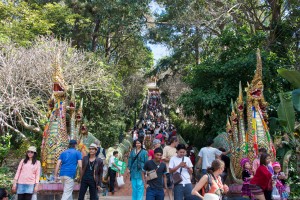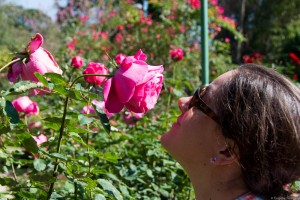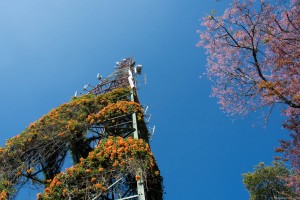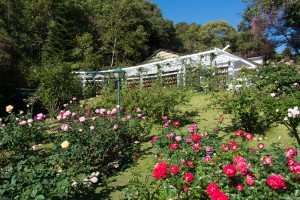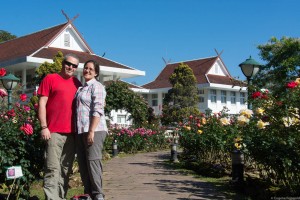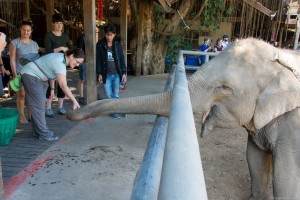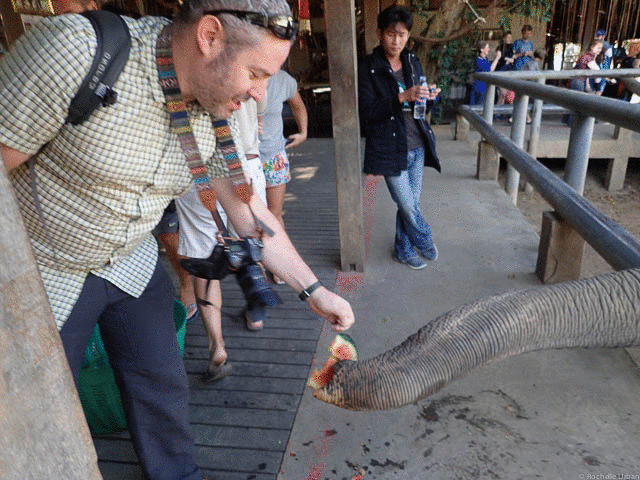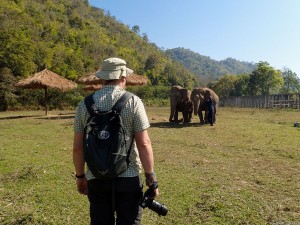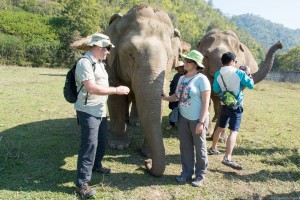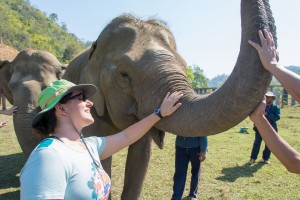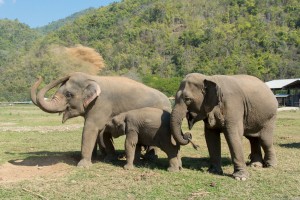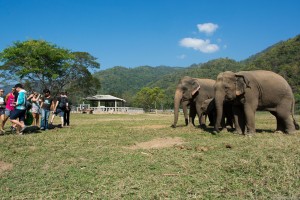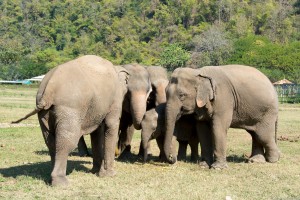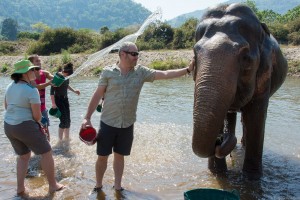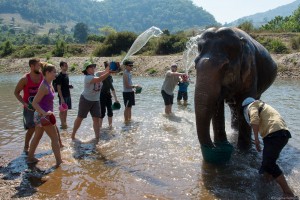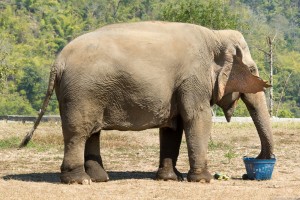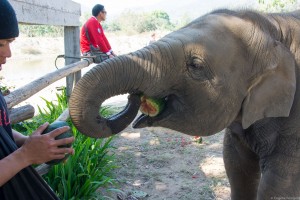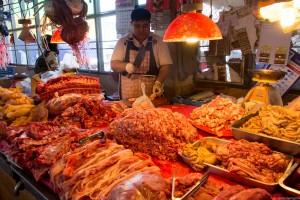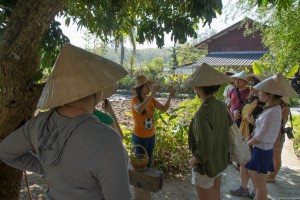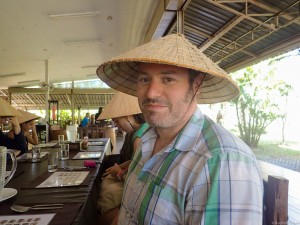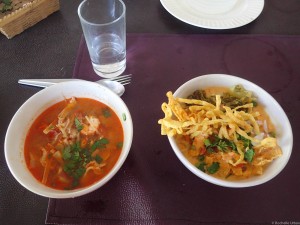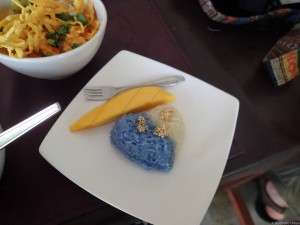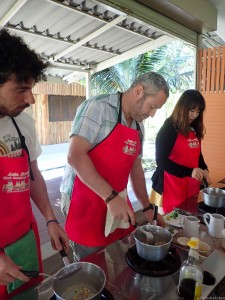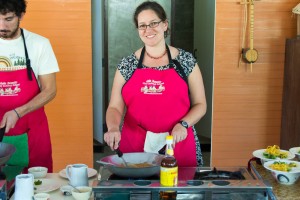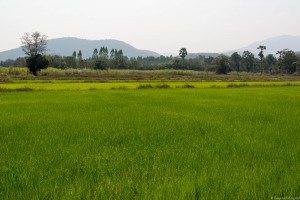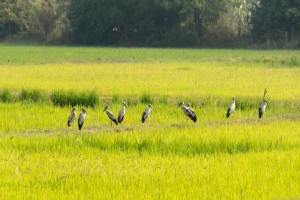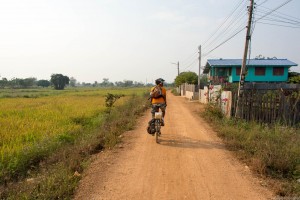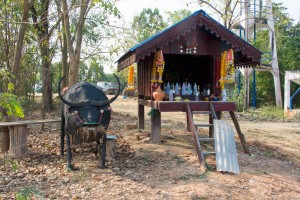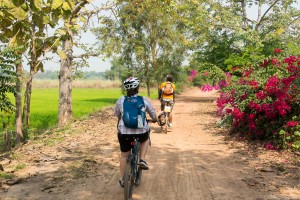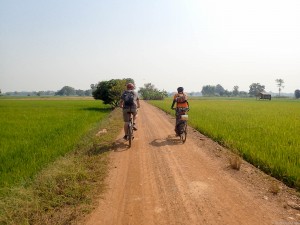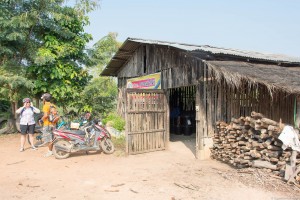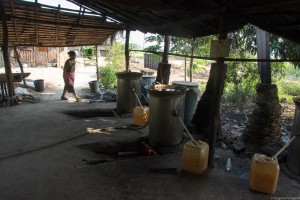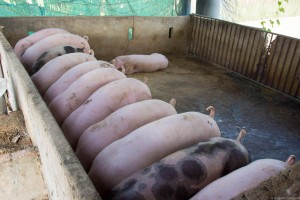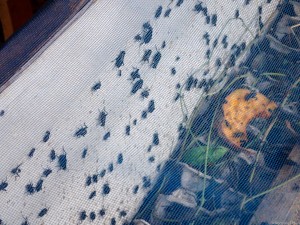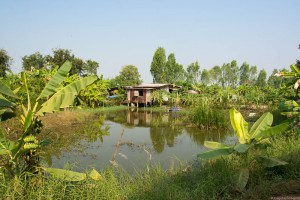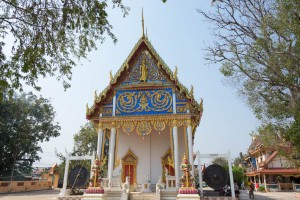One of the required activities of a trip to Northern Thailand is a trek to one of the many hill-tribe villages dotting the mountains. These villages are populated by various ethnic minorities that have come to Thailand to escape persecution in their home countries – mainly Burma, China, and Laos. They are generally denied Thai citizenship and therefore denied the right to work as anything but subsistence farmers.
We were in Mae Hong Son as part of our drive around a popular Northern Thailand loop (more on this adventure soon). For our trek, we wanted to do some actual hiking, no elephant rides (which is pretty standard in the itineraries), and we wanted to stay in a village overnight. We tried to find reviews of specific tour companies online, but there weren’t many. So we went with one that was at least mentioned in the Lonely Planet guide and hoped for the best.
After being picked up at our hotel, we drove for about 45 minutes, through the airport (literally) and up the mountain behind it. We were let out at a large village to start the trek with our guide. The trail first wound its way through farms and some forest. It was wonderful to be hiking in nature as we’d been spending too much time driving the last few days. But soon, we reached a stream. We were told to change our shoes (Eug and I were both wearing our nice hiking boots). When we booked the tour, we had been instructed to bring sandals as we would be walking through some streams (and were shown pictures of people wading through water). So at the advice of our guide, we slipped on our sandals and headed into the water, expecting to wade across then change back into our boots. Instead, we spent the next hours walking up the stream – sometimes in it, sometimes on the banks, many times scrambling up the rocks that lined it. The trek was unexpectedly challenging. Sometimes we got to places where – given the slippery state of the rocks, the precariousness of the footings, and the high penalty for failure – I was more than a little unsure about how much more I could handle. Eugene, on the other hand, bounded up and down the rocks like a mountain goat. Nonetheless, the scenery was quite beautiful and worth the effort.
- Spot Rochelle on the trail
- Walking through mountain streams.
- “Just a little more up”
- One of the many small falls along the way.
- Kids hauling wood down the same trail we were struggling up.
Finally, after about 4 hours of climbing, wading, and scrambling, we were told we could change back into our hiking shoes. This was a welcome relief for my feet which were starting to prune. But our trek was not close to being over for the day. Our guide – indicating more with his hands than his tenuous grasp of English – that we’d go “up-up-up”, which we did for another 3 hours. We passed by many landscapes along the way: evergreen forests, fern groves, bamboo forests, even some small farms carved out of the forest. It was a tiring day, but Eugene managed to find the energy to take some great photos along the way.
- Horrifying swarm of spiders
- Beautiful spider on the trail
- Bamboo forests
- A climb is often worth the view
- Spiders were about the only wildlife we saw.
- Poop on poop (dog on cow)
At last we arrived at our village for the night just before sunset. There were a number of traditional bamboo buildings, a variety of farm animals, but no people. Here is when our guide gave us the background of this “village”. A decade or so ago it was a village of 12 families. Over the years, most of the population moved to the city. Now there are only 2 families: one single man and an older couple, who we were to stay with. As we soon learned, the wife was visiting her daughter in the city (and we aren’t sure where the other guy was), so the entire village that hosted us consisted of one man.
Our host was 67 years old and had been born in the village. As we sat by his indoor cooking fire, we tried to learn more about his life. He lives a life that mixes traditions with a few modern conveniences. He does have a cell phone, but he has to walk for 20 minutes to get any signal. He has a solar panel that charges some truck batteries for night-time lighting, and he had to carry the heavy batteries up the trail on his back as there are no other roads in. He eats mainly what plants and animals he finds in the forest, but also has a small vegetable garden and some pigs and chickens that he sells for money.
- The “village”
- Our hut in the villiage
- Most scenic outhouse shot ever!
- Our host making a roasted jungle eggplant chili sauce
In the morning, we set off bright and early as the roosters that slept under our room wouldn’t have had it any other way. We already knew we had a long day ahead, given the climbing we’d done on the way there, and we were not disappointed. Our guide took us down a different trail, shorter, more steep, but much drier than the one we’d taken up.
On the road down, we met a man who was resting by the trail. Our guide explained that he was a refugee from Myanmar, and while he can live in Thailand, he cannot work. So he makes money doing what odd jobs he can. That day he was hauling wood down the trail for about $7. Our guide gave him his ratty old jacket, and the man was very grateful to receive it. It made personal some of the things I’d read about the problems between minority groups near the Thai border in Myanmar.
- Down, down, down.
- More down, down, down.
- Funnel spiders are everywhere.
- This Burmese man canot legally work – he was getting about $7 to haul this wood down the trail.
- Such a spacious trail
- Coming down the trail
- Deforested lands where there are farms.
I’ll leave you with some advice if you plan on going trekking in Northern Thailand – and probably anywhere. Make sure to actually ask for details: What is the trail like? How many people live in the village we will stay in? And no matter the answers – be prepared to enjoy whatever life throws at you.
